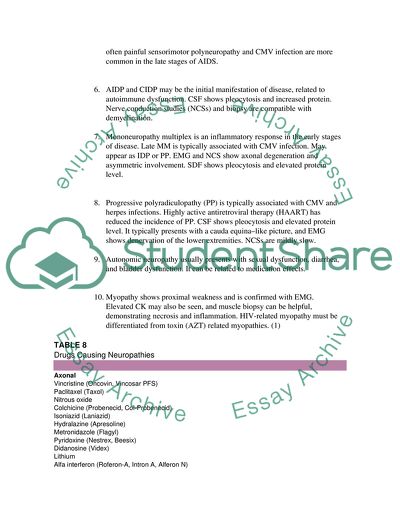Cite this document
(“THE NEUROMUSCULAR COMPLICATIONS OF HIV INFECTIONS Essay”, n.d.)
THE NEUROMUSCULAR COMPLICATIONS OF HIV INFECTIONS Essay. Retrieved from https://studentshare.org/miscellaneous/1543292-the-neuromuscular-complications-of-hiv-infections
THE NEUROMUSCULAR COMPLICATIONS OF HIV INFECTIONS Essay. Retrieved from https://studentshare.org/miscellaneous/1543292-the-neuromuscular-complications-of-hiv-infections
(THE NEUROMUSCULAR COMPLICATIONS OF HIV INFECTIONS Essay)
THE NEUROMUSCULAR COMPLICATIONS OF HIV INFECTIONS Essay. https://studentshare.org/miscellaneous/1543292-the-neuromuscular-complications-of-hiv-infections.
THE NEUROMUSCULAR COMPLICATIONS OF HIV INFECTIONS Essay. https://studentshare.org/miscellaneous/1543292-the-neuromuscular-complications-of-hiv-infections.
“THE NEUROMUSCULAR COMPLICATIONS OF HIV INFECTIONS Essay”, n.d. https://studentshare.org/miscellaneous/1543292-the-neuromuscular-complications-of-hiv-infections.


